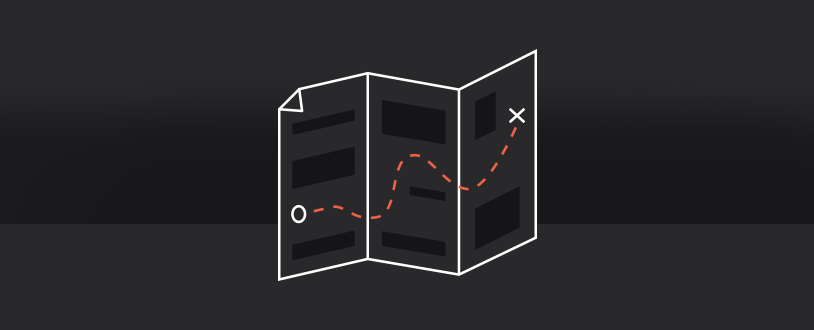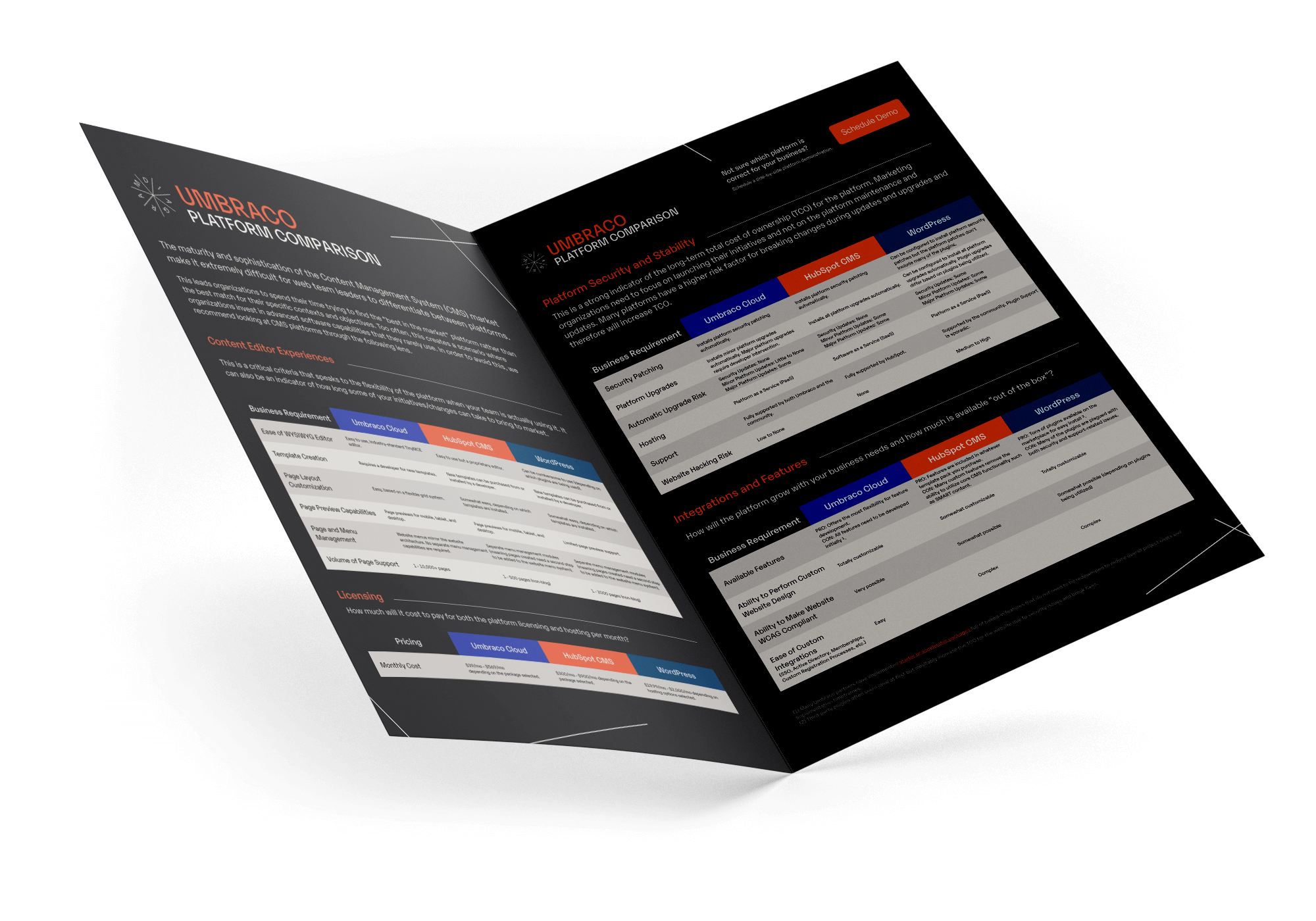3 CMS Platform Migration Considerations [Mini Episode]
Chris Osterhout SVP of Strategy#Digital Strategy

Diagram's Chris Osterhout shares three essentials tips when considering a CMS Platform migration.
The following is a transcription of the above presentation:
Intro: Welcome to Diagram Views Unfiltered. Mini episodes where we answer your questions to make you digital heroes at your organization.
Chris: Thanks for listening to Diagram Views Unfiltered. My name is Chris Osterhout, and today we’re going to be talking about the top three things that your organization should be thinking about if you’re looking to move to another CMS platform.
When it comes to platform migrations or looking at a platform migration, the number one mistake we see organizations make is not defining the budget for the level of investment they’d like to make up front to both select and migrate to the new platform. Nine times out of 10, organizations bury their heads in the sand and say, “We don’t know how much this stuff is supposed to cost, and we want the quote/unquote best price.”
What happens then is that, they’ll send out a request for proposal to all these different platform makers and departments, asking for what it would cost to migrate their website to a new CMS, only to find out that it’s way more expensive than they thought it was going to be. They’re like, “Shit, we can’t afford $100,000.00 a year in software plus a quarter million dollar implementation of the software in this fiscal year.”
So, all that’s done is kind of set your organization back six months to a year on your digital initiatives, meaning you’re not going to see as much ROI and you’re probably falling behind that of your competitors. The funny part is, organizations say, like, “We don’t know what it’s going to cost, Chris. Like, how are we supposed to know what it’s going to cost?” And I usually say, “If you were about to go buy a house, you would know how much you can afford. If you can only afford, say, $1,200.00 a month on a mortgage payment, you’re not going to be buying a $600,000.00 house. It’s just not going to happen.”
So, why is it that organizations can’t say we are willing to invest half a million dollars in a migration effort for our new platform? They most certainly can, they just need to look at it through a different light. So, if you’re going to migrate to a new CMS platform, the first thing you need to do is to find the budget that you are willing to invest and get the executive stakeholder feedback and sponsorship so that you can actually make this project a success.
So, now that you know how much investment you want to make in a platform and to migrate to the new CMS platform that you purchased, it’s important that you take a moment to pump the brakes and really understand what your organization needs in order to accomplish your digital goals over the next one to three years. What I mean by this is, a lot of times when you’re looking at new platforms, you’re feature shopping, hey, what’s the highest-ranked one in the analyst reviews? Oh, here’s all the things that we think we want to do over the next few years. But it’s important to understand, is your organization capable of actually executing at any of the things that you’ve seen from a feature set perspective within the platforms that you’re looking at?
It’s important not to just overbuy the platform because it’s ranked high or you think you might want to do things. It’s important you figure out, in the next one to three years, here are the things that we must do as an organization to see the ROI that we’re looking for. Then, getting a platform that will allow you to achieve those goals while at the same time allowing you to add on software later when you need it, in order to continue to grow from a digital agility perspective.
So, only really paying for what you need now, but not paying for the things you don’t need now and reserving that for a later investment. Now that you know the level of investment that you’re looking to make into the new platform and you understand at a baseline, what are the things that you need as an organization to achieve in the next one to three years, usually it’s time to go out and find the software. So, beyond not defining the budget up front, the second largest mistake we see organizations make is that they decide to find the software first, and then choose a partner to implement the software later.
What happens is, often the software manufacturer is not doing the implementation. More often than not, that is the case. So what happens is, they’ll sell you software that might end up being 30 or 40 percent of your overall budget, and then they just assume that you should be able to do the implementation based on the rest of the money you have in your budget, assuming you expose that to the software manufacturer. The tricky part is, they don’t really know because they’re not doing the implementation.
So if you find a partner ahead of time who can go hand-in-hand with you into that conversation and demoing process for the software that you’re thinking about getting, and ensuring that the implementation cost will fit within your overall budget, they’re basically helping serve as the guardrails to make sure that you’re not buying software that you can’t afford, but also that your implementation of the software won’t leak beyond your budget.
So, from my perspective, if you define the budget but don’t pick a partner, you introduce a level of risk in how much the implementation will cost and the overall project budget will be. So, once you have your budget and you know what you need, you definitely should find a partner to help figure out, is this software right for me from an implementation perspective and can we keep it within the bread box of the budget to which we’ve defined?
So when it comes to migrating or selecting a new CMS platform, the top three things that we think you need to be concerned about are, number one, make sure you define the budget up front so that you know how much money you can invest in this project overall, that should be software and it should be implementation. Number two, make sure that you, as an organization, define the things that you need to achieve your digital initiatives in the next one to three years. Don’t be so concerned about what’s five to 10 years out, technology changes very quickly and very rapidly, so you want to make sure that you’re really focused in on what you need to see ROI within your organization in the next one to three years. Lastly, if you’re going to buy a CMS platform or a digital experience platform, it’s unbelievably critical that you find the partner that will be doing the implementation before you buy the software. They’re going to make sure that you’re not buying more software than you need at this time, and will make sure that the implementation of that software will not go beyond the guardrails of the budget you’ve set forth for the project.
If you take care of these three things up front, I almost can guarantee you that the project will be successful at the end.
Closing: Thanks for listening to Diagram Views Unfiltered.
Related Posts

Why You Need an SEO Content Audit in your Migration Plan
Diagram's Allison Casey spills all her insider SEO tips on migrating your content the right way.

4 Ways to Avoid Disaster When Migrating CMS Platforms
If you have ever migrated from one content management system (CMS) or eCommerce platform to another, you know how many unexpected issues can occur during the migration process.
Results Matter.
We design creative digital solutions that grow your business, strengthen your brand and engage your audience. Our team blends creativity with insights, analytics and technology to deliver beauty, function, accessibility and most of all, ROI. Do you have a project you want to discuss?
Like what you read?
Subscribe to our blog "Diagram Views" for the latest trends in web design, inbound marketing and mobile strategy.


